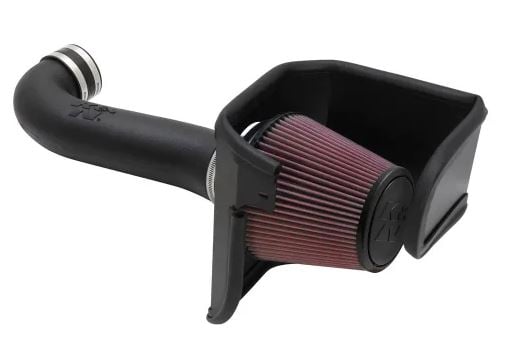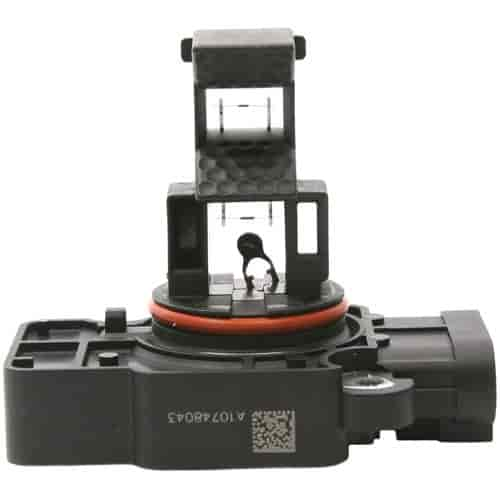
Performance vs. Economy is as Easy as 1,2,3
We field a variety of questions from customers. Two of the most common that we receive is "What can I do to make my vehicle faster?" and "What can I do to make my vehicle get better gas mileage?" The answers to both questions are more alike than you might think.
Horsepower and fuel economy are both functions of efficiency. The goal is to achieve the most out of the engine given the weight of the vehicle that it is moving. There is a relative threshold that must be kept to be efficient (ie. power to weight ratio). Simply said, you don't get better efficiency, simply by installing a smaller engine. There was a rather entertaining and interesting test performed by a popular automotive television series that tested daily driving fuel economy with a BMW M3 versus a Toyota Prius. The M3 actually got better gas mileage in daily street driving usage just because it had more power. It spent less of its power potential to move the vehicle's weight, thus using less fuel. Simply said, an underpowered engine can actually hurt fuel mileage.
Efficiency is the name of the game in both arenas. In most cases, "high performance" upgrades are also "fuel savings" upgrades. The end result will be determined by the driving habits. If you have a magnetic foot that is always stuck to the floor pan, expect to have fun, but don't be so surprised if you are at the gas pump more. Keep your driving mellow and you'll just smile and waive as you pass the gas station.
So back to the question, "What do I do?". We find that most vehicles are most inefficient in 3 areas below; air intake, exhaust, and tuning. As always, give the JEGS tech line a call for a custom tailored performance and fuel economy plan for your vehicle.
Air Intakes
Most factory air intake boxes and associated plumbing are not designed to be efficient. The design goals are to provide adequate air supply to the engine, but mostly as sound deadeners to provide the quietest ride possible. The paper filters used in these systems are also very inefficient and must be thrown away after each use. Depending on your budget, Jegs offers many upgrade styles to help improve your intake air flow. The most basic item would be a replacement high flow element that fits into the original air box. This would be the same size and shape as the original element, but will offer better flow volume than the paper unit. These filters are also reusable, so you can clean and reuse instead of throwing it away after service. If you have a little more to spend and you want the best results, consider a cold air intake kit. Again offered by manufacturers that we carry, these kits replace the entire air intake system. The design of the filter and the tubing is strictly for improved efficiency and more power. These full systems will provide on average 3 times more power than installing a replacement high flow element.
Exhaust System
The theories described in the above air intake section holds true to your vehicle's exhaust as well, we are just on the outlet side of the engine. Again the goal is efficiency, but the original equipment is mostly designed to be quiet and less expensive to build. Upgrading your vehicle with a free-flowing exhaust helps improve power and fuel efficiency. Also similarly are the different options in budget. High flow replacement mufflers are available to replace the more restrictive stock muffler only or "cat-back" systems are a little more out of the wallet, but provide for the biggest gains.

Tuning
Tuning is one of the most overlooked areas of a vehicle in a performance application. You could throw the best parts money can buy at a car and it won't run as well as it should if not tuned properly. For carbureted cars, the tune may be as simple as replacing the spark plugs, ignition wires, cap/rotor, and properly setting the ignition timing and fuel delivery. For today's late model fuel injection vehicles, however, understanding what needs to be done is not as straight forward as it used to be. A number of manufacturers offer either a computer chip or hand held programmers to enhance the engine tune for performance and efficiency. The nice aspect is that you don't need to be a computer whiz to install them. The manufacturers have taken a lot of the guesswork out of your hands offering pre-tested and proven tuning programs for your specific vehicle. Most 1996 and newer vehicles will utilize a hand held programmer. Installing is as easy as plugging it into your diagnostic port (typically under your dashboard), answering a few questions about your vehicle, and letting the programmer do the rest. Most of these programmers have the functionality of a diagnostic tool as well, which is a nice feature.

Well, that wraps up this lesson. These were the basic 1,2,3 step formula that will work best for most applications. There are more upgrades for more power and efficiency if desired. As mentioned above, we have the world's best technical professionals waiting to answer your questions on your project. Feel free to call or email us a tech question anytime.




